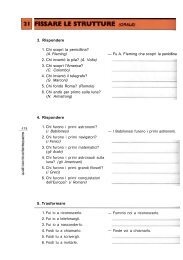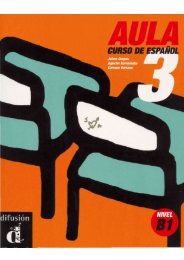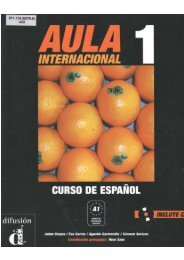III. The Beginnings of Transformation
III. The Beginnings of Transformation
III. The Beginnings of Transformation
Create successful ePaper yourself
Turn your PDF publications into a flip-book with our unique Google optimized e-Paper software.
BEGINNINGS OF TRANSFORMATION<br />
Because the conquerors were a minority, their position was <strong>of</strong>ten<br />
difficult. Anatolia was a vast territorial expanse, and with the appearance<br />
<strong>of</strong> the Crusaders and the Byzantine reconquest, the Turks were hard put<br />
to defend the conquest that as yet they had been unable to digest. For this<br />
reason they were forced to resort to a number <strong>of</strong> measures in an effort to<br />
safeguard their political supremacy in a land where their subjects far<br />
outnumbered them. In some regions they simply disarmed the Christians<br />
and kept them from positions <strong>of</strong> power in the government. In Tarsus,<br />
Marash, and Antioch, where the population was for the most part Christian,<br />
the latter were strictly forbidden to carry arms or to participate in<br />
government and were restricted to the exercise <strong>of</strong> agriculture and trade. 272<br />
In other regions the Turks were <strong>of</strong>ten forced to make use <strong>of</strong> Christian<br />
troops and militia. <strong>The</strong>re were Armenian contingents in the army <strong>of</strong> the<br />
Turkish emir Buzan, and the Armenian troops <strong>of</strong> Tutuch <strong>of</strong> Damascus<br />
played a particularly important role. 273 <strong>The</strong> Turkish garrison <strong>of</strong> Edessa at<br />
one point was largely Armenian. <strong>The</strong> mixovarvaroi came to play a<br />
significant role as a further source <strong>of</strong> military manpower for the ruling<br />
minority, 274 and so did the converts. 275 <strong>The</strong> Turks resorted to taking<br />
Christian children and converting them, acts specifically mentioned in<br />
Antioch, around Samosata, and in western Asia Minor. 276<br />
<strong>The</strong>re are other indications that the Christian population <strong>of</strong> Asia<br />
Minor was still quite extensive in the twelfth century and even in the<br />
thirteenth century. 277 <strong>The</strong> History <strong>of</strong> the Patriarchs <strong>of</strong> Alexandria asserts<br />
that the majority <strong>of</strong> the subjects <strong>of</strong> the sultan Mas'ud I (1116-56) were<br />
Greeks, and there is the testimony <strong>of</strong> the thirteenth- and fourteenth-<br />
century travelers. Marco Polo noted that Anatolia possessed a considerable<br />
Christian population.<br />
In Turcomania there are three classes <strong>of</strong>people. First there are the Turcomans;<br />
these are worshippers <strong>of</strong> Mahommet, a rude people with an uncouth language <strong>of</strong><br />
their own. <strong>The</strong>y dwell among mountains and downs where they find good pasture<br />
for their occupation is cattlekeeping. Excellent horses, known as Turquans, are<br />
reared in their country, and also very valuable mules. <strong>The</strong> other two classes are the<br />
Armenians and Greeks, who live mixt with the former in the towns and villages,<br />
occupying themselves with trade and handicrafts. <strong>The</strong>y weave the finest and<br />
Comnena, <strong>III</strong>, 26. Tyriaeum, though in a region <strong>of</strong> warfare and within Turkish domains,<br />
had no Turkish garrison or commander. Laodiceia, when it was reconquered by John II<br />
in the beginning <strong>of</strong> his reign had only 800 Turks, and this was considered to be a large<br />
number <strong>of</strong> Turks, Cinnamus, 6.<br />
272 William <strong>of</strong> Tyre, <strong>III</strong>, xix; IV, і; V, xi.<br />
273 Matthew <strong>of</strong> Edessa, pp. 199, 205-206, 209-210. Danishmend himselfwas possibly an<br />
Armenian. Matthew <strong>of</strong> Edessa, p. 256.<br />
274<br />
Anna Comnena, <strong>III</strong>, 205; II, 66.<br />
275<br />
As reflected in the Danishmendname.<br />
276<br />
Raymund <strong>of</strong> Aguilers, R.H.C., H.O., <strong>III</strong>, 250-251. Tudebodus, R.H.C., H.O., <strong>III</strong>,<br />
29. Gesta Francorum, 55. William <strong>of</strong> Tyre, IV, iv.<br />
277 O. Turan, "Les souverains seldjoukides et leurs sujets non-musulmans," S.I., I<br />
(1953), 76 (hereafter cited as Turan, "Sujets non-musulmans.").<br />
l82






